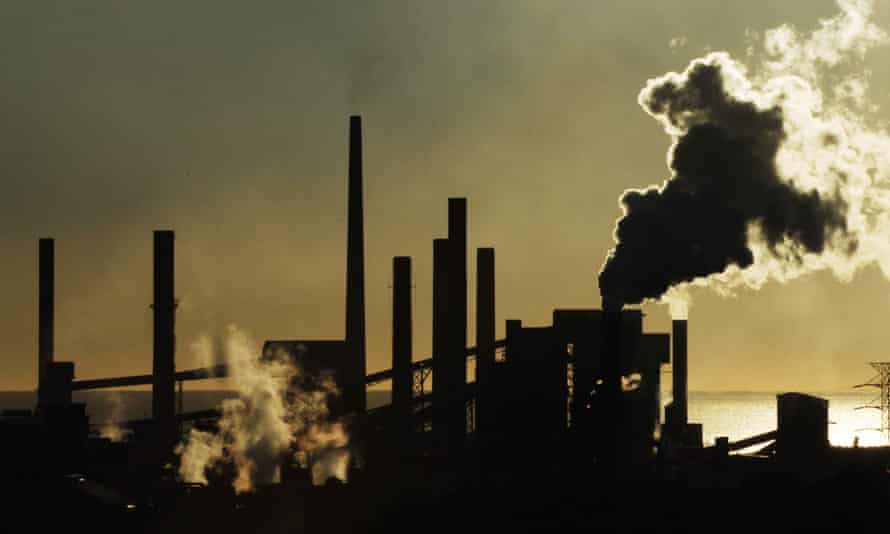Political parties have to tell us what they are doing to keep within our carbon budget

Last modified on Tue 2 Feb 2021 03.32 AEDT
We need to change how we talk about climate change policy. No longer can we hand out pass marks for irrelevant targets that sound good but actually fail to prevent climate change.
Back in 2018, the IPCC announced that we had 12 years to limit temperatures to 1.5C above pre-industrial levels.
This set off a lot of focus on different numbers: net zero by 2050 or 2045, 45% cuts by 2030 or 2035, 26% by 2030:
It’s no surprise that voters didn’t really grasp what is going on, because these targets actually disguise the reality of the task at hand and serve only to confuse.
Right now, the Morrison government remains wedded to a 26% cut in emissions from 2005 levels by 2030 and yet are on target for just 22%.
Before the last election the ALP pledged a 45% cut by 2030, but now is fudging because the government itself is unwilling to set a target beyond 2030 until after the next election.
Last year the talk was that the ALP would push the 45% cut out to 2035.
You can understand why voters tune out a bit – I mean is there much difference between 45% by 2030 or 2035, or between getting to zero by 2045 or 2050?
Yes there is – a massive difference.
And the reason is why a report last week by the Climate Targets Panel argues we need a 50% cut by 2030.
For, you see, the numbers we should focus on are not 2045 or 2050 but 6,161 and 3,521.
Or, to be precise: 6,161Gt C02-e and 3,521Gt C02-e.
These are the actual amount of carbon we can emit to keep temperatures below either 1.5C or 2C above pre-industrial levels.
The carbon emitted last year doesn’t get wiped away – it stays, adding to the impact of climate change.
Because we know the impact of carbon on temperatures, we can estimate how much more carbon can be emitted before there is too much in the atmosphere to prevent temperatures rising by certain amounts.
Research by Melbourne University climate scientist Malte Meinshausen done for the Victorian government estimates that Australia’s share of the global carbon budget is 6,161Gt C02-e in order to stay below a 2C increase, and 3,521Gt C02-e to stay below a 1.5C increase.
If we emit more than that we are contributing towards those higher temperatures.
This is the true vandalism of the Abbott-Turnbull-Morrison governments – their choices to increase emissions mean much greater cuts now are needed.
Think of it like a bank account.
Imagine you have $61,610 to last you for 30 weeks. That works out at $2,053 dollars to spend a week. But what if you spend $48,880 in the first 10 weeks?
Oops. You just used up 79% of your budget in a third of the time.
This is what we are currently projected to do with our carbon budget.
The latest government projections are for Australia to emit 4,880Gt C02-e in the 10 years to 2030.
If we keep on that path, we will use up all of our 2C budget of 6,161GT C02-e by 2033:
And this is where the difference between those median-term targets matter.
Were the ALP to extend its median target of a 45% cut to 2035, that would actually be a pledge to use up all of our carbon budget by 2035.
A target of a 45% cut by 2035 is a target to fail.
The reason why the Carbon Target Panel argues we need a 50% cut by 2030 is because that trend will keep us from using up all of the 2C budget.
The bad news? Even that target will have us use up the carbon budget of 3,521GT C02-e we need to limit ourselves to limit temperatures below 1.5C.
The only way we can keep within the 1.5C budget it to target net zero emissions by 2035 – that would require cutting emissions by nearly three quarters by 2030:
The problem is that because emissions stay in the atmosphere, even if the government were to announce it will target net zero emissions by 2050, given how much will have been emitted by 2030 we will still go more than 50% over our carbon budget:
This is why, if Scott Morrison comes out and pledges getting to zero by 2050, no one should give him any credit whatsoever.
Unless he explains how he will do so and keep within our carbon budget, the pledge will be meaningless.
Currently if we want to do it in a nice straight line, we need to reach 50% cuts by 2030 and net zero by 2045.
That is the least disruptive timeline.
But if we keep on the current rate, so much of our budget will we have used by 2030 that we will need to slash emissions drastically and get to next zero by 2036:
A target of 45% cut by 2035 gives us no hope, and a target of 45% by 2030 means we would need to then get to zero by 2042.
So we need to stop thinking that setting a target of zero emissions by 2050 is good enough – we need to be asking what political parties are doing to keep within our carbon budget.
And if they don’t know, then we should treat their policies with the contempt they deserve.
No comments:
Post a Comment